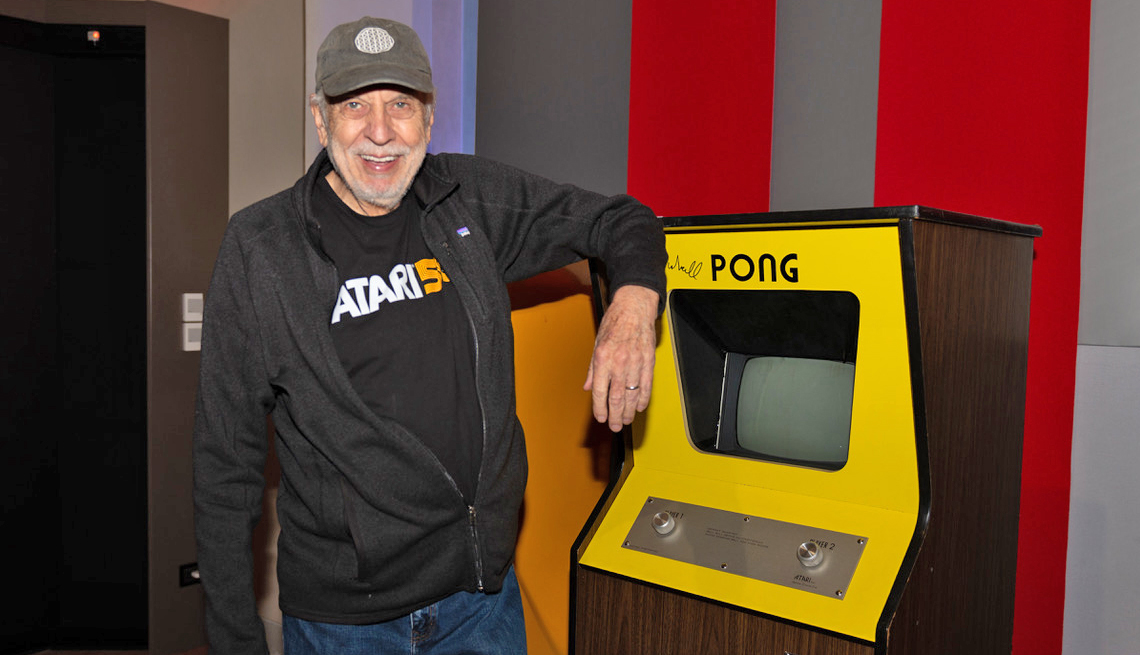
Pong, the first video game with mass public appeal, turns 50
- Select a language for the TTS:
- UK English Female
- UK English Male
- US English Female
- US English Male
- Australian Female
- Australian Male
- Language selected: (auto detect) - EN
Play all audios:

“A mass market of boomers gave Pong a try while they were out in public,” says Hawkins, who is based in Santa Barbara, California. “Introverts often don’t know what to say in social life, so
having something to do was an icebreaker, conversation starter and even a way to meet girls.” That’s how Bushnell remembers it, too. “Introverts often don’t know what to say in social life,
so having something to do was an icebreaker, conversation starter and even a way to meet girls.” —Trip Hawkins, 68, Electronic Arts founder “The thing that’s very interesting to me is the
number of people that said that they met their husband or wife playing Pong,” Bushnell adds. Pong even seemed to foreshadow a time decades later when video games could become a spectator
sport. Nowadays, millions of gamers watch tournaments and livestreams of esports, shorthand for electronic sports competitions. Retired video game executive James Cantrall, 70, says he and
his buddies would be at a bar that had a Pong table and another game called Asteroids. “We’d sit down, have our beers, and guys would be playing,” he says. “And everybody else would be
watching and, you know, making snide comments.” Cantrall lives these days in Big Bear Lake, California. VIDEO GAMES GO HOME AND GO MOBILE Such scenes eventually faded. “Arcade games stopped
feeling novel and cool,” Hawkins says. “Gaming became the domain of the nerds. I was one of them, and so were my childhood friends.” Pong for the home didn’t turn up until 1975 as a
battery-operated unit sold exclusively at Sears for $79. Eventually, rival clones emerged. Home Pong consisted of a box with a speaker, left and right player control dials, a game start
button and an on-off switch. It was connected via cable to a separate switch box that in turn was hooked up to the antenna terminals of a TV through twin lead wires. From these rudimentary
beginnings — and through numerous ups and downs — the video game business grew to be ginormous. North of 3 billion people now play video games around the world. In 2021, about two-thirds of
adults ages 55 to 64 worldwide who use the internet played video games, according to London-based GWI market research. “Early games were a lot of fun because they were creative. But as the
power of computers went on, the developers could do a lot more with things like graphics and sound and color,” Cantrall says. The myriad ways people played evolved, too. According to
Bushnell, Atari’s own cartridge-based Video Computer System (VCS), or Atari 2600, console sold about 30 million units compared to around half a million Pongs in its heyday. “Pong was
important, but I think the VCS … was much more impactful,” he says. Atari competitors included companies such as Coleco and Mattel. Bushnell, who also founded the Chuck E. Cheese pizza
restaurant chain, ended up selling Atari in 1976 to what was then Warner Communications. Through the years, hard-core gamers might purchase expensive “gaming rig” computers, while the masses
eventually gravitated toward popular Sony PlayStation, Nintendo and Microsoft Xbox video game consoles. And like everything else, game play eventually went mobile. Legions of people now
play games on their smartphones, something Bushnell couldn’t have fathomed 50 years ago.
